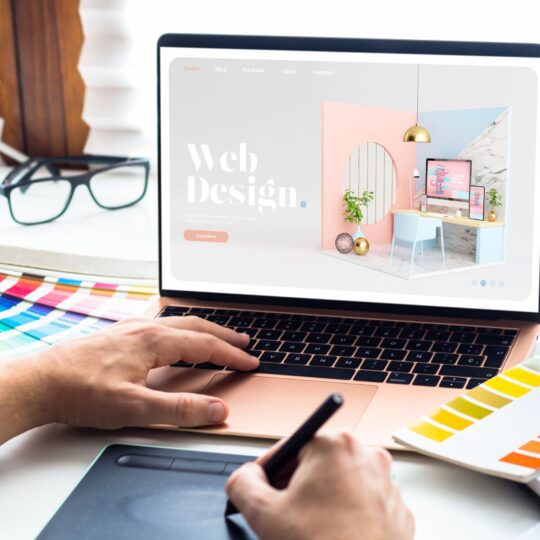As we embark on a new decade, the digital landscape continues to evolve at an unprecedented pace. The future of website design looks promising, with emerging technologies paving the way for more interactive, personalized, and seamless user experiences. This blog delves into the future trends and innovations in website design, highlighting how businesses can stay ahead of the curve by adopting these cutting-edge practices. Let’s explore what the next decade holds for website design and how your company can benefit from these advancements.
AI Integration: Personalization at Its Peak
Artificial Intelligence (AI) is set to revolutionize website design by enabling hyper-personalized user experiences. AI algorithms can analyze user behavior, preferences, and interactions to deliver content that is tailored to the individual’s needs. Imagine a website that adapts its layout, content, and recommendations based on who is viewing it, creating a unique experience for each visitor.
Actionable Tip: Start collecting and analyzing user data now. Implement AI-driven tools like chatbots and personalized recommendation engines to enhance user engagement and satisfaction.
Responsive Design: Beyond Mobile-First
Responsive design has been a cornerstone of web design for years, primarily focusing on mobile users. However, the next decade will see responsive design evolving beyond mobile-first to encompass a wider array of devices and screen sizes, including wearables, IoT devices, and yet-to-be-invented gadgets. Websites will need to be fluid and adaptable, seamlessly transitioning from one device to another.
Actionable Tip: Employ flexible grids and layouts, and test your website’s responsiveness across various devices. Prioritize content based on device capabilities to ensure a consistent user experience everywhere.
Interactive Elements: Engaging Users Like Never Before
The future of website design is interactive. From micro-interactions to full-blown immersive experiences, engaging users will be at the heart of design strategy. Expect to see more websites incorporating elements like voice interactions, augmented reality (AR), virtual reality (VR), and 3D animations to captivate users and provide an unforgettable browsing experience.
Actionable Tip: Experiment with interactive elements that complement your brand and website goals. Start small with hover effects and animated transitions, then gradually incorporate more advanced technologies like AR and VR.
Minimalism and Material Design: Aesthetic and Functionality Combined
Minimalism will continue to dominate website design, focusing on simplicity and user-friendly interfaces. However, it will evolve to incorporate Material Design principles, which use shadow, depth, and motion to provide more intuitive interactions. This blend of minimalism and Material Design will create websites that are not only aesthetically pleasing but also highly functional.
Actionable Tip: Simplify your website’s design by eliminating unnecessary elements. Use color, typography, and space to guide user attention, and incorporate Material Design principles to enhance usability.
Accessibility and Inclusivity: Designing for Everyone
Accessibility and inclusivity will become paramount in website design. With global internet usage growing, designing websites that are accessible to everyone, including those with disabilities, will be a moral and legal imperative. This includes using accessible navigation, color contrast, and text alternatives for multimedia.
Actionable Tip: Conduct an accessibility audit of your website. Implement WCAG (Web Content Accessibility Guidelines) standards to ensure your website is accessible to as broad an audience as possible.
Sustainable Web Design: Reducing Digital Carbon Footprint
Sustainable web design aims to minimize the environmental impact of digital products, focusing on efficient coding, optimized images, and green hosting. As awareness of digital carbon footprints grows, sustainable practices will become a critical aspect of website design.
Actionable Tip: Opt for green hosting providers, optimize your website’s images and assets for faster loading times, and clean up your code to reduce energy consumption.
Conclusion
The future of website design is vibrant and dynamic, marked by technological advancements that promise to enhance user experiences in unprecedented ways. By embracing AI integration, responsive design, interactive elements, minimalism, accessibility, and sustainability, businesses can ensure their websites remain relevant and engaging in the years to come.
Ready to Future-Proof Your Website?
At [Your Company], we’re at the forefront of these emerging trends, ready to help you navigate the future of website design. Whether you’re looking to incorporate AI, make your website more responsive, or ensure it’s accessible to everyone, we have the expertise to bring your vision to life. Contact us at [email protected] to discover how we can transform your website into a future-ready digital masterpiece.
The journey towards the future of website design starts with a single step. Let’s take that step together and create websites that are not just visually stunning but also smart, inclusive, and sustainable.










